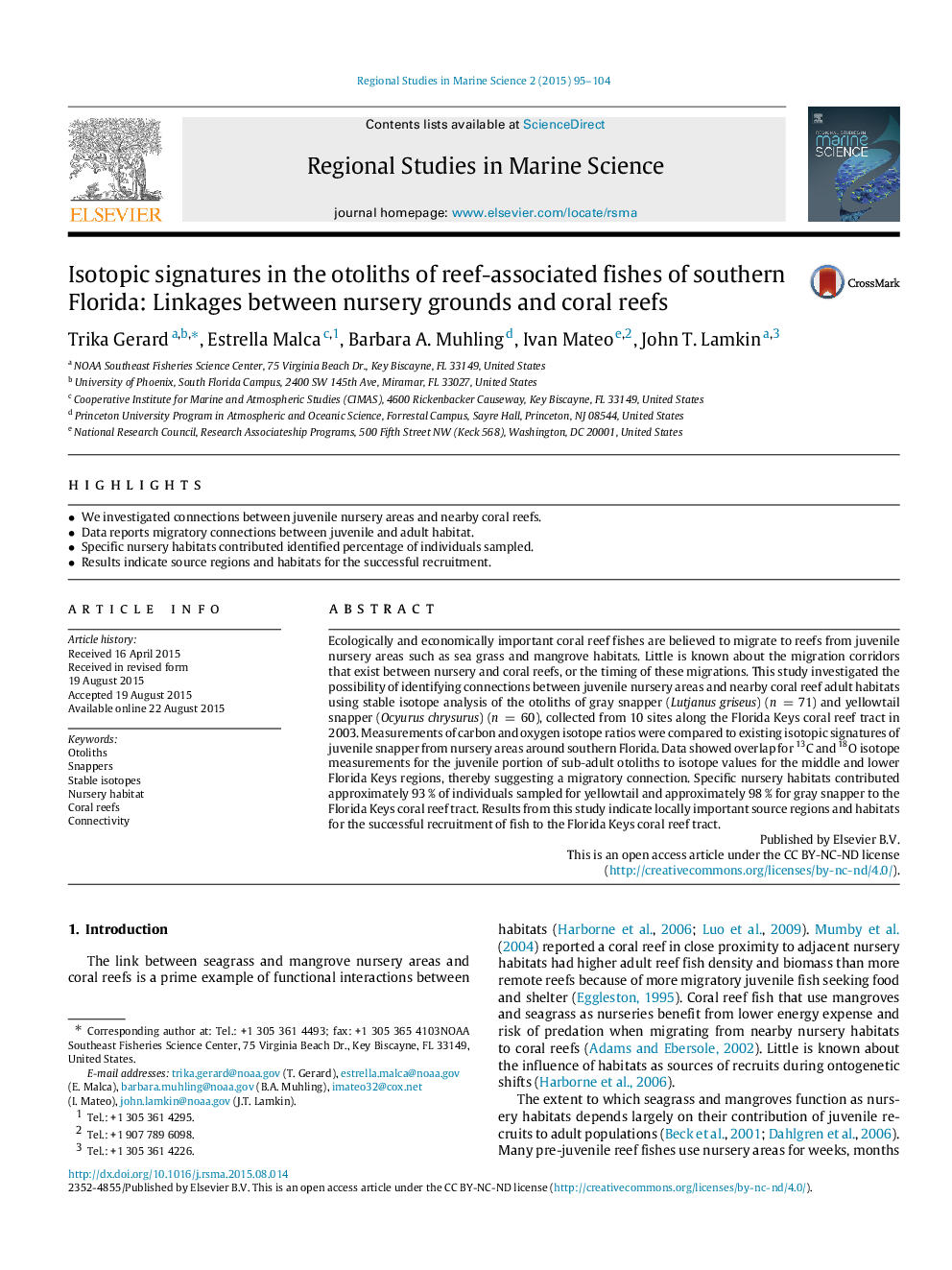| کد مقاله | کد نشریه | سال انتشار | مقاله انگلیسی | نسخه تمام متن |
|---|---|---|---|---|
| 6363187 | 1622825 | 2015 | 10 صفحه PDF | دانلود رایگان |

- We investigated connections between juvenile nursery areas and nearby coral reefs.
- Data reports migratory connections between juvenile and adult habitat.
- Specific nursery habitats contributed identified percentage of individuals sampled.
- Results indicate source regions and habitats for the successful recruitment.
Ecologically and economically important coral reef fishes are believed to migrate to reefs from juvenile nursery areas such as sea grass and mangrove habitats. Little is known about the migration corridors that exist between nursery and coral reefs, or the timing of these migrations. This study investigated the possibility of identifying connections between juvenile nursery areas and nearby coral reef adult habitats using stable isotope analysis of the otoliths of gray snapper (Lutjanus griseus) (n= 71) and yellowtail snapper (Ocyuruschrysurus) (n=60), collected from 10 sites along the Florida Keys coral reef tract in 2003. Measurements of carbon and oxygen isotope ratios were compared to existing isotopic signatures of juvenile snapper from nursery areas around southern Florida. Data showed overlap for 13C and 18Oisotope measurements for the juvenile portion of sub-adult otoliths to isotope values for the middle and lower Florida Keys regions, thereby suggesting a migratory connection. Specific nursery habitats contributed approximately 93 % of individuals sampled for yellowtail and approximately 98 % for gray snapper to the Florida Keys coral reef tract. Results from this study indicate locally important source regions and habitats for the successful recruitment of fish to the Florida Keys coral reef tract.
Journal: Regional Studies in Marine Science - Volume 2, November 2015, Pages 95-104